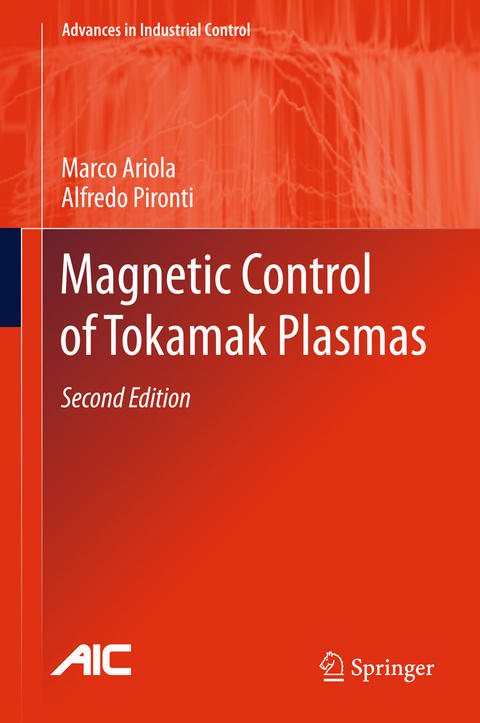Magnetic Control of Tokamak Plasmas
Springer International Publishing (Verlag)
978-3-319-29888-7 (ISBN)
The second edition of Magnetic Control of Tokamak Plasmas contains numerous updates and a substantial amount of completely new material covering areas such as:
- modelling and control of resistive wall modes-the most important non-axisimmetric mode;
- the isoflux approach for shape control;
- a general approach for the control of limiter plasmas;
- the use of inner vessel coils for vertical stabilization; and
- significantly enhanced treatment of plasma-shape control at JET, including experimental results and introducing a method implemented for operation in the presence of current saturations.
Whenever possible, coverage of the various topics is rounded out with experimental results obtained on currently existing tokamaks. The book also includes a presentation of the typical actuators and sensors used for control purposes in tokamaks. Some mathematical details are given in the appendices for the interested reader.
The ideas formulated in this monograph will be of great practical help to control engineers, academic researchers and graduate students working directly with problems related to the control of nuclear fusion. They will also stimulate control researchers interested more generally in the advanced applications of the discipline.
Advances in Industrial Control aims to report and encourage the transfer of technology in control engineering. The rapid development of control technology has an impact on all areas of the control discipline. The series offers an opportunity for researchers to present an extended exposition of new work in all aspects of industrial control.
Marco Ariola was born in Naples, Italy, in 1971. He received the Laurea degree in electronic engineering and the Research Doctorate degree in electronic engineering and computer science from the University of Naples Federico II, Naples, Italy, in 1995 and 2000, respectively. From 1996 to 2005 he was with the Department of Computer and Systems Engineering of the University of Naples Federico II. Currently, he is a full Professor of Automatic Control at the University of Naples Parthenope in the Engineering Department. From September 1998 to February 1999, he was a Visiting Scholar with the Department of Electrical & Computer Engineering of University of New Mexico, Albuquerque, NM, USA. His research interests include statistical control, robust control, control of nuclear fusion devices, control of aerospace systems. He has published more than 150 journal papers, conference papers, articles in books and encyclopedias. He is co-author of the books "Magnetic Control of Tokamak Plasmas" and "Finite-Time Stability and Control" published by Springer in 2008 and 2013. He is a senior member of the IEEE. Professor Alfredo Pironti received the Laurea degree cum Laude in Electronic Engineering, and the PhD in Electronic and Computing Engineering from the University of Naples Federico II in 1991 and 1995, respectively. Since 1991 he works at the University of Naples Federico II, where he currently is a Full Professor of System and Control Theory in the Department of Electrical and Information Technology Engineering. He has spent several periods as visiting researcher at the Max Planck Institute for Plasma Physics in Garching (Germany), the Center for Control Engineering and Computation (University of California at Santa Barbara), the ITER Joint Work Site of Naka (Japan), and the EFDA-JET site of Culham (UK). His research interests include application of feedback control to nuclear fusion problems, robust control of uncertain systems, and differential games theory. In 2005 Alfredo Pironti has been guest editor for the IEEE Control Systems Magazine journal, where he has contributed to two special issues focused on the control of plasmas in tokamak machines. In 2008 he has co-authored the book "Magnetic Control of Tokamak Plasmas" published by Springer. He contributes to the IEEE CSS Technical Committee on Power Generation, co-chairing the thrust on Nuclear Energy Generation. He is author of more than 200 papers published on international journals, books, and conference proceedings.
Introduction.- Part I Plasma Modelling.- Plasma Modelling for MagneticControl.- Modelling of Resistive Wall Modes.- The Plasma Boundary andIts Identification.- Part II Plasma Control.- Plasma Magnetic ControlProblem.- Plasma Position and Current Control for Limiter Plasmas.-Plasma Vertical Stabilization.- Plasma Shape Control for ITER.- PlasmaShape Control at TCV.- Plasma Shape Control at JET.- Control ofResistive Wall Modes.- Appendices: Some Mathematical Background; UnitsUsed in Plasma Physics.
| Erscheinungsdatum | 08.10.2016 |
|---|---|
| Reihe/Serie | Advances in Industrial Control |
| Zusatzinfo | XV, 203 p. 78 illus., 67 illus. in color. |
| Verlagsort | Cham |
| Sprache | englisch |
| Maße | 155 x 235 mm |
| Themenwelt | Technik ► Elektrotechnik / Energietechnik |
| Schlagworte | Atomic, Molecular, Optical and Plasma Physics • Control • Energy • ITER • Jet • Magnetic Containment • nuclear energy • Nuclear Engineering • nuclear fusion • Plasma Control • Plasma Modelling • Power generation • TCV |
| ISBN-10 | 3-319-29888-7 / 3319298887 |
| ISBN-13 | 978-3-319-29888-7 / 9783319298887 |
| Zustand | Neuware |
| Haben Sie eine Frage zum Produkt? |
aus dem Bereich




